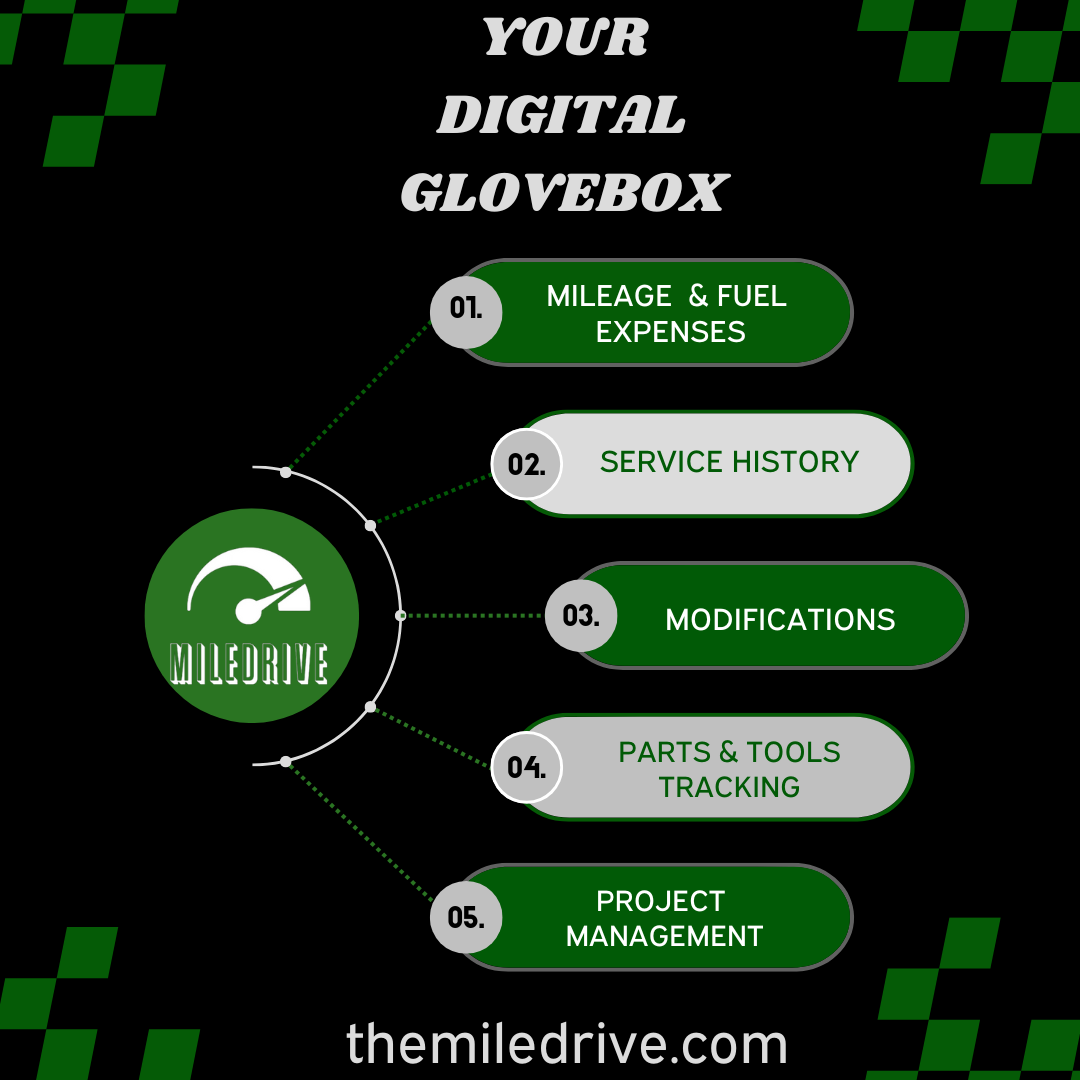Introduction to Vehicle Management Software

In this comprehensive article, I'll dive into the world of vehicle management software, exploring its benefits, key features, and how it can revolutionize the way you manage your fleet.
Whether you're just starting to explore this technology or looking to upgrade your current system, this guide will provide you with the insights and information you need to make an informed decision.
The Benefits of Using Vehicle Management Software
The advantages of utilizing vehicle management software are numerous and far-reaching. Here are some of the key benefits I've experienced:
- Improved Maintenance Tracking: By integrating vehicle maintenance schedules, repair histories, and service reminders, I can ensure that my fleet is well-maintained and operating at peak performance. This not only extends the lifespan of my vehicles but also helps prevent costly breakdowns.
- Enhanced Cost Control: Vehicle management software allows me to track and manage all vehicle-related expenses, from fuel consumption to insurance and registration fees. This data-driven approach helps me identify areas for cost optimization and make informed decisions about my fleet's operations.
- Increased Compliance and Safety: Staying on top of regulations, such as driver licensing, vehicle inspections, and safety protocols, is crucial for any fleet. Vehicle management software helps me streamline these processes, ensuring that my fleet is compliant and my drivers are operating safely.
- Improved Productivity and Efficiency: By automating various administrative tasks, vehicle management software frees up my time and resources, allowing me to focus on more strategic initiatives. This enhanced productivity translates into tangible cost savings and better overall fleet performance.
- Enhanced Visibility and Reporting: Comprehensive reporting features in vehicle management software provide me with a clear, data-driven view of my fleet's performance. This visibility enables me to make more informed decisions, identify areas for improvement, and effectively communicate the state of my fleet to stakeholders.
Top Features to Look for in Vehicle Management Software
When evaluating vehicle management software options, there are several key features I consider essential for my fleet's needs:
- Maintenance Scheduling and Tracking: The software should allow me to schedule routine maintenance, track service histories, and receive automated alerts for upcoming service intervals.
- Fuel Tracking and Management: Efficient fuel tracking and management capabilities help me monitor fuel consumption, identify inefficient driving behaviors, and optimize fuel-related expenses.
- Driver and Vehicle Monitoring: Real-time vehicle tracking, driver behavior monitoring, and performance analytics enable me to ensure safe and efficient driving practices.
- Expense Tracking and Reporting: Comprehensive expense tracking, including costs for fuel, insurance, registration, and repairs, allows me to gain a clear understanding of my vehicle's financial performance.
- Compliance and Regulatory Management: The software should help me manage driver licenses, vehicle inspections, and other regulatory requirements, ensuring that my fleet remains compliant.
- Integrations with Other Systems: The ability to integrate vehicle management software with other business systems, such as accounting, and telematics, can provide a more holistic view of my fleet's operations.
- Mobile Accessibility: A user-friendly mobile app or responsive web interface allows me and my team to access and manage vehicle data on-the-go, improving overall productivity and decision-making.
Streamlining Vehicle Maintenance with Software
One of the most significant benefits of vehicle management software is its ability to streamline the maintenance process. By automating and centralizing maintenance schedules, repair records, and service reminders, I can ensure that my fleet is well-maintained and operating at peak efficiency.
The software's maintenance tracking features allow me to input detailed information about each vehicle, including make, model, mileage, and service history.
I can then set up custom maintenance schedules based on manufacturer recommendations or my own fleet-specific requirements. The system will then automatically generate alerts and reminders, ensuring that I never miss a critical service interval.
Moreover, the software's integration with my vehicle's telematics data allows me to monitor vehicle health in real-time. I can receive notifications about potential issues, such as engine trouble or tire wear, and proactively schedule maintenance before a breakdown occurs. This predictive maintenance approach helps me avoid costly downtime and extend the lifespan of my vehicles.
Tracking and Managing Vehicle Expenses with Software
Effective cost control is essential for any fleet operation, and vehicle management software provides me with the tools to track and manage all vehicle-related expenses. From fuel consumption and insurance premiums to registration fees and repair costs, the software's comprehensive expense tracking capabilities give me a clear and detailed view of my fleet's financial performance.
By inputting and categorizing all vehicle-related expenses, I can generate detailed reports that help me identify areas for cost optimization. For example, I can analyze fuel usage patterns and implement strategies to improve fuel efficiency, such as route optimization or driver training. Additionally, the software's reporting features allow me to track maintenance and repair costs, enabling me to make informed decisions about vehicle replacement or leasing options.
The expense tracking capabilities of vehicle management software also help me stay on top of regulatory compliance. I can easily generate reports to verify that my fleet is meeting all necessary insurance, registration, and tax requirements, reducing the risk of penalties and fines.
Enhancing Driver Safety and Compliance with Software
Ensuring the safety and compliance of my fleet's drivers is a top priority, and vehicle management software plays a crucial role in this effort. The software's driver monitoring and reporting features allow me to track driver behavior, such as speeding, harsh braking, and idling, and take appropriate action to address any issues.
By analyzing driver performance data, I can identify areas for improvement and provide targeted training to enhance safe driving practices. This not only helps me maintain a safer fleet but also reduces the risk of accidents, which can have significant financial and reputational consequences.
In addition to driver monitoring, the software's compliance management features help me stay on top of regulatory requirements. I can easily track and manage driver licenses, vehicle inspections, and other compliance-related tasks, ensuring that my fleet remains in full compliance with all relevant laws and regulations.
Integrating Vehicle Management Software with Other Systems
To maximize the benefits of vehicle management software, I strive to integrate it with other business systems and technologies. By connecting the software with my company's accounting, and telematics platforms, I can create a more comprehensive and streamlined approach to fleet management.
For example, integrating the vehicle management software with my accounting system allows me to automatically sync vehicle-related expenses, such as fuel, maintenance, and insurance, with my financial records. This integration not only improves the accuracy of my financial reporting but also streamlines the invoicing and billing processes.
Finally, integrating the vehicle management software with telematics devices installed in my fleet vehicles provides me with real-time data on vehicle location, diagnostics, and driver behavior. This synergy between the software and telematics systems allows me to make more informed decisions, optimize fleet utilization, and enhance overall operational efficiency.
Popular Vehicle Management Software Options
As I've explored the world of vehicle management software, I've come across several popular and well-regarded options that cater to the diverse needs of fleet operators. Some of the leading vehicle management software solutions include:
- MileDrive: A new modern vehicle management platform that offers features such as service history log, mileage & fuel tracking, expense management, AI reporting and project management.
- Fleetio: A comprehensive fleet management platform that offers features such as maintenance scheduling, fuel tracking, expense management, and compliance monitoring
- Verizon Connect Reveal: A robust solution that combines vehicle tracking, driver behavior monitoring, and fleet optimization tools to enhance productivity and safety.
- Geotab: A versatile platform that integrates vehicle data, telematics, and advanced analytics to provide insights and improve fleet performance.
- Samsara: A cloud-based fleet management system that offers real-time vehicle tracking, driver safety features, and comprehensive reporting capabilities.
- KeepTruckin: A user-friendly solution that focuses on electronic logging, fleet tracking, and compliance management to help fleets stay compliant and efficient.
Each of these software options has its own unique strengths and features, and the choice ultimately depends on the specific needs and requirements of my fleet. I encourage you to research and compare these solutions to determine the best fit for your business.
Choosing the Right Vehicle Management Software for You
Selecting the right vehicle management software for your fleet can be a daunting task, given the wide array of options available. However, by carefully considering your specific needs and requirements, you can make an informed decision that will benefit your fleet operations.
When evaluating vehicle management software, I recommend focusing on the following key factors:
- Fleet Size and Complexity: Assess the size and complexity of your fleet to ensure that the software can accommodate your current and future needs.
- Required Features: Identify the essential features you require, such as maintenance tracking, expense management, and compliance monitoring, and ensure that the software meets those needs.
- Ease of Use and Accessibility: Consider the user-friendliness of the software and its mobile accessibility, as this can greatly impact the adoption and utilization by your team.
- Integration Capabilities: Evaluate the software's ability to integrate with your existing business systems, such as accounting, HR, and telematics, to create a seamless and efficient workflow.
- Scalability and Flexibility: Ensure that the software can grow and adapt as your fleet and business needs evolve over time.
- Customer Support and Training: Assess the quality of the vendor's customer support and the availability of training resources to ensure a smooth implementation and ongoing use of the software.
By carefully weighing these factors and aligning them with your specific fleet management requirements, you can confidently select the vehicle management software that will deliver the greatest benefits and return on investment for your business.
Conclusion: The Future of Vehicle Management Software
Looking ahead, anticipate the future of vehicle management software will be even more exciting and transformative. Advancements in areas such as artificial intelligence, machine learning, and predictive analytics will enable even greater insights and automation, allowing me to make more informed decisions and optimize your vehicle's performance.







